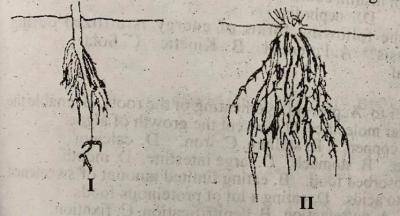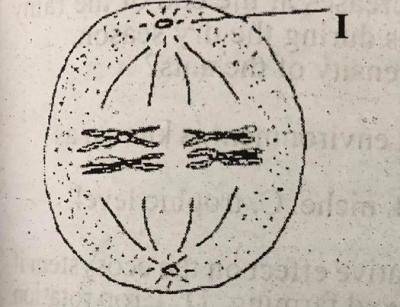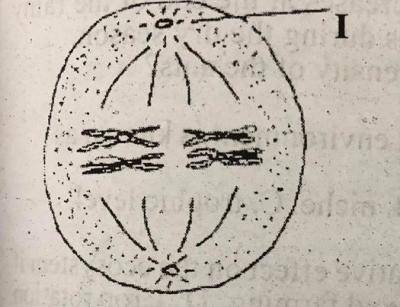Year :
2019
Title :
Biology
Exam :
WASSCE/WAEC MAY/JUNE
Paper 1 | Objectives
1 - 10 of 50 Questions
| # | Question | Ans |
|---|---|---|
| 1. |
Which of the following structures will NOT be found in the nucleus of a cell? A. DNA B. Nucleolus C. Lysosome D. Centriole |
C |
| 2. |
An example of organ level of organization is _______ A. bird B. kidney C. spermatozoon D. xylem |
B |
| 3. |
A structural similarity between Parameciumn and Amoeba is the presence of______ A. one food vacuole B. two contractile vacuoles C. two nuclei D. one gullet |
A |
| 4. |
 The classes of plants the root systems in diagrams I and II above represent respectively are______________ A. Dicotyledoneae and Monocotyledoneae B. Monocotyledoneae and Dicotyledoneae C. Dicotyledoneae and Dicotyledoncae D. Monocotyledoneae and Monocotyledoneae |
B |
| 5. |
 The diagram above is an illustration of a stage in a biological process. Study it and answer this question. A. Prophase B. Metaphase C. Anaphase D. Telophase |
B |
| 6. |
 The part labelled I is the________ A. centromere B. spindle fibre C. centriole D. chiasmata |
A |
| 7. |
The rate of diffusion of molecules between two media will be higher if_________ A. the difference in concentration of the two media is low B. the difference in concentration of the two media is negligible C. the difference in concentration of the two media is high D. there is no difference in the concentration of the two media |
D |
| 8. |
 Anaerobic respiration in the organism illustrated in the diagram above produces carbon dioxide and________ A. ethanol B. water C. oxygen D. glucose |
A |
| 9. |
Underground storage stems which grow horizontally in the soil are_______ A. bulbs B. runners C. rhizomes D. corms |
C |
| 10. |
Muscle fatigue in the body of an athlete is due to__________ A. low pH B. high oxygen content C. accumulation of lactic acid D. accumulation of carbonic acid |
C |
| 1. |
Which of the following structures will NOT be found in the nucleus of a cell? A. DNA B. Nucleolus C. Lysosome D. Centriole |
C |
| 2. |
An example of organ level of organization is _______ A. bird B. kidney C. spermatozoon D. xylem |
B |
| 3. |
A structural similarity between Parameciumn and Amoeba is the presence of______ A. one food vacuole B. two contractile vacuoles C. two nuclei D. one gullet |
A |
| 4. |
 The classes of plants the root systems in diagrams I and II above represent respectively are______________ A. Dicotyledoneae and Monocotyledoneae B. Monocotyledoneae and Dicotyledoneae C. Dicotyledoneae and Dicotyledoncae D. Monocotyledoneae and Monocotyledoneae |
B |
| 5. |
 The diagram above is an illustration of a stage in a biological process. Study it and answer this question. A. Prophase B. Metaphase C. Anaphase D. Telophase |
B |
| 6. |
 The part labelled I is the________ A. centromere B. spindle fibre C. centriole D. chiasmata |
A |
| 7. |
The rate of diffusion of molecules between two media will be higher if_________ A. the difference in concentration of the two media is low B. the difference in concentration of the two media is negligible C. the difference in concentration of the two media is high D. there is no difference in the concentration of the two media |
D |
| 8. |
 Anaerobic respiration in the organism illustrated in the diagram above produces carbon dioxide and________ A. ethanol B. water C. oxygen D. glucose |
A |
| 9. |
Underground storage stems which grow horizontally in the soil are_______ A. bulbs B. runners C. rhizomes D. corms |
C |
| 10. |
Muscle fatigue in the body of an athlete is due to__________ A. low pH B. high oxygen content C. accumulation of lactic acid D. accumulation of carbonic acid |
C |